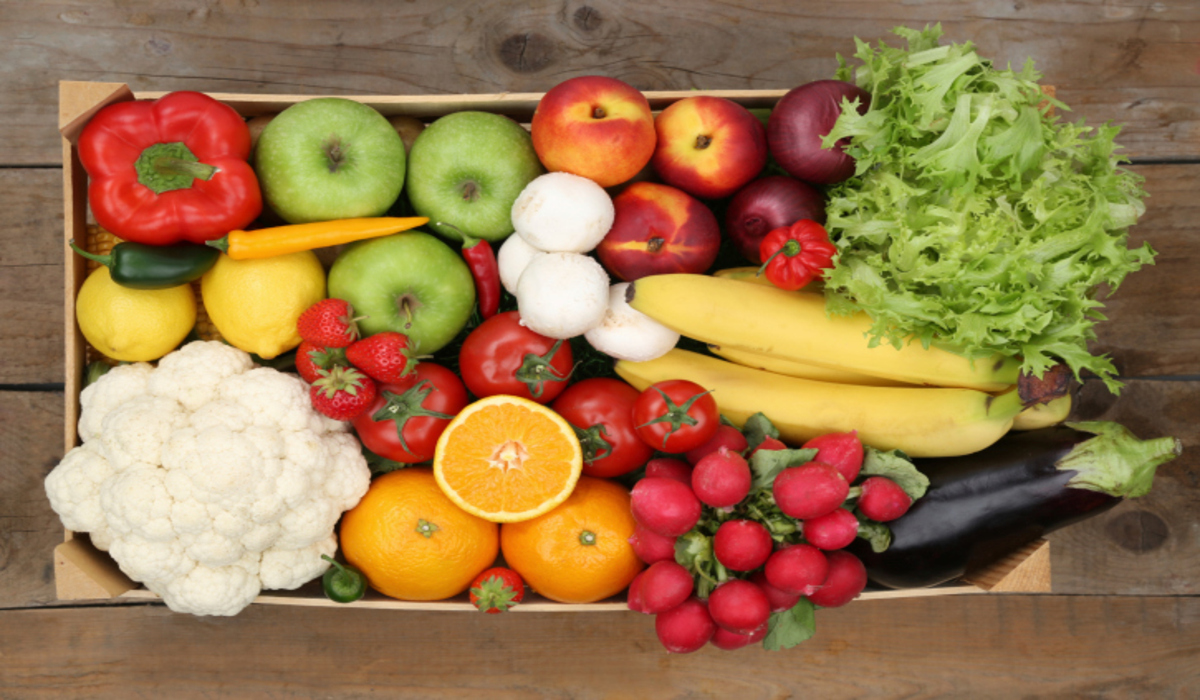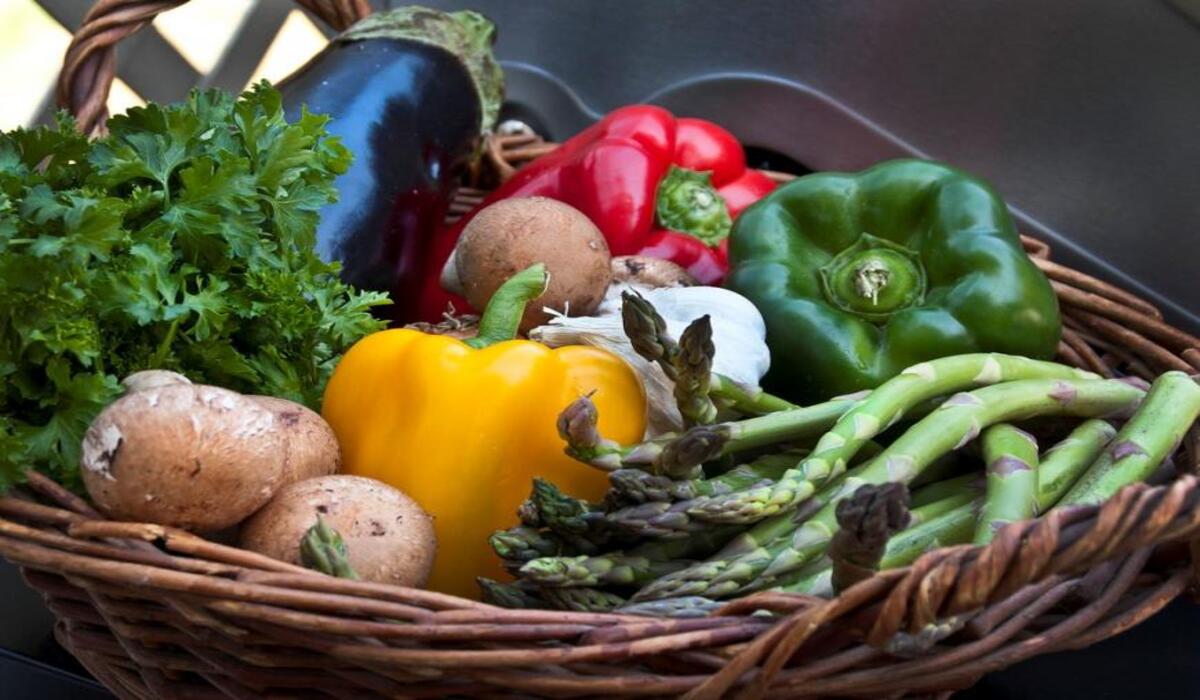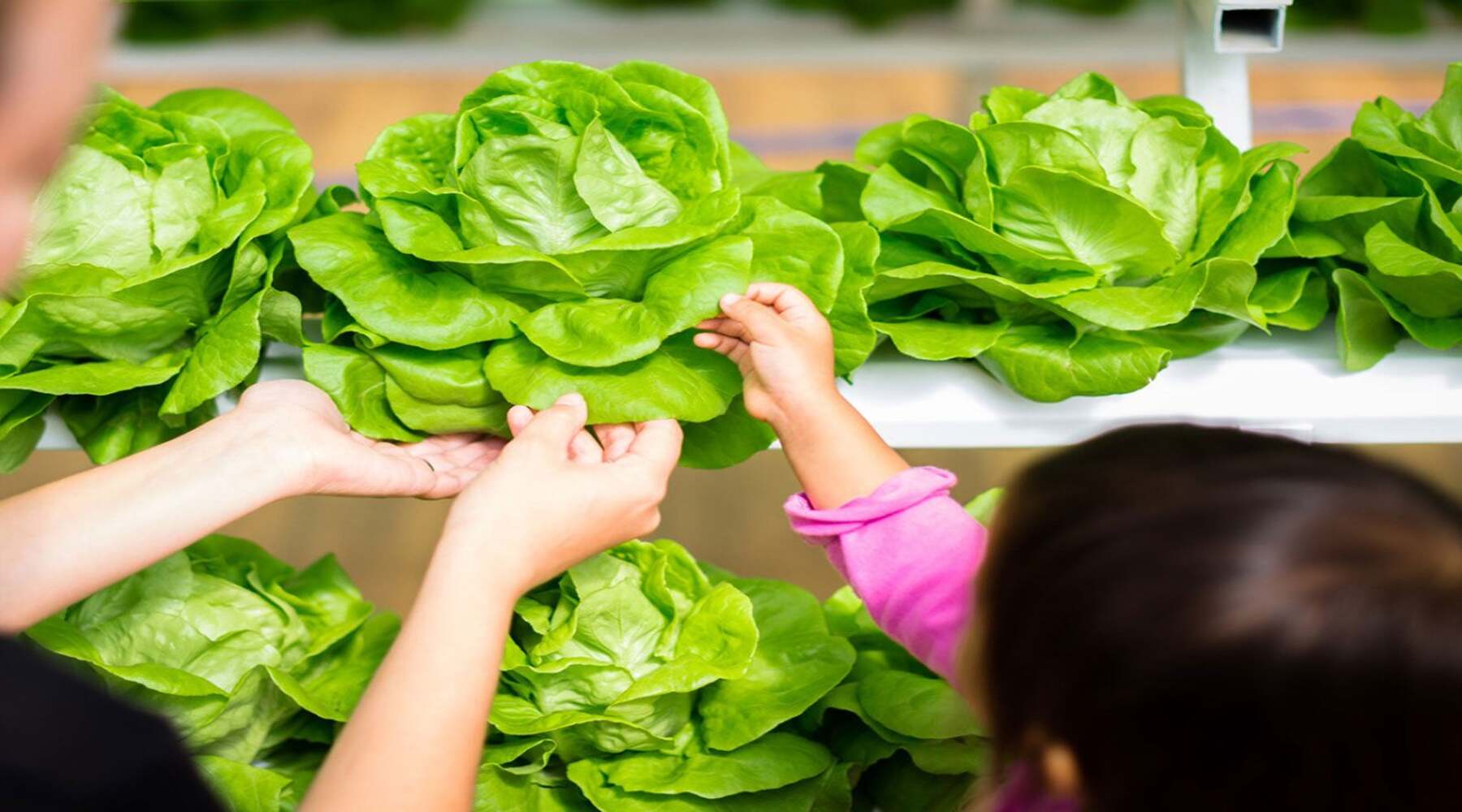Home>Gardening News and Trends>Latest News>Why Do Kids Hate Vegetables


Latest News
Why Do Kids Hate Vegetables
Modified: January 22, 2024
Find out the latest news on why kids hate vegetables and discover strategies to overcome their aversion.
(Many of the links in this article redirect to a specific reviewed product. Your purchase of these products through affiliate links helps to generate commission for Chicagolandgardening.com, at no extra cost. Learn more)
Table of Contents
- Introduction
- The Importance of Vegetables for Kids
- Factors Contributing to Kids’ Dislike of Vegetables
- Taste and Texture Issues
- Lack of Exposure and Familiarity
- Influence of Peers and Role Models
- Parenting Approaches and Attitudes towards Vegetables
- Strategies for Encouraging Vegetable Consumption
- Making Vegetables Fun and Appealing
- Getting Kids Involved in Meal Preparation
- Educating Kids about the Benefits of Vegetables
- Conclusion
Introduction
Vegetables are an essential part of a balanced and nutritious diet. They provide vital nutrients, vitamins, and minerals that support the growth and development of children. However, it’s no secret that many kids have an aversion to vegetables. From picky eaters to outright protests, parents often find themselves struggling to get their children to eat their greens.
Understanding why kids hate vegetables is crucial in finding effective solutions to this common issue. By exploring the factors that contribute to their dislike, parents and caregivers can implement strategies to encourage a healthier relationship between children and vegetables.
This article will delve into the reasons behind kids’ aversion to vegetables and provide practical tips for making vegetables more appealing to them. Whether you have a toddler who refuses to eat anything green or a school-aged child with a strong distaste for certain vegetables, this article will provide you with valuable insights and strategies to help you address this challenge.
The Importance of Vegetables for Kids
Vegetables play a vital role in a child’s overall health and development. They are packed with essential nutrients, vitamins, and minerals that support proper growth, enhance immune function, and promote healthy digestion. Including a variety of vegetables in a child’s diet can have long-lasting benefits for their overall well-being.
One of the primary benefits of vegetables is the high fiber content they provide. Fiber helps regulate digestion and prevent constipation, which is a common issue among children. Additionally, vegetables are low in calories and high in water content, making them ideal for maintaining a healthy weight and preventing obesity.
Furthermore, vegetables are rich in vitamins and minerals that are essential for the proper functioning of the body. They are a great source of vitamin C, which boosts the immune system and helps the body fight off infections and illnesses. Leafy green vegetables, such as spinach and kale, are high in iron, critical for optimal oxygen transportation and the prevention of anemia.
Research shows that a diet high in vegetables can reduce the risk of chronic diseases later in life, such as heart disease, diabetes, and certain types of cancer. By introducing vegetables early on and encouraging their consumption throughout childhood, parents can lay the foundation for a lifetime of healthy eating habits and well-being.
With all these benefits in mind, it is crucial to find ways to overcome children’s aversion to vegetables and ensure they receive the necessary nutrients for their growth and development. By addressing the factors contributing to their dislike and implementing creative strategies, parents can create a positive association with vegetables and pave the way for a lifetime of nutritious eating habits.
Factors Contributing to Kids’ Dislike of Vegetables
There are several factors that contribute to kids’ dislike of vegetables. Understanding these factors can help parents and caregivers address the issue more effectively and find creative solutions to encourage vegetable consumption.
Taste and texture: Many vegetables have distinct flavors and textures that may be unfamiliar or unappealing to children. Bitterness, for example, is a common characteristic of certain vegetables like broccoli or Brussels sprouts, which can be off-putting to young taste buds. Additionally, the texture of certain vegetables, such as the crunchiness of carrots or the sliminess of cooked spinach, can be a challenge for children to accept.
Lack of exposure and familiarity: Children often develop preferences based on what they are exposed to regularly. If kids are not accustomed to eating vegetables from a young age, they may be less inclined to accept them as part of their diet. Familiarity and repeated exposure play a significant role in helping children develop a liking for vegetables.
Influence of peers and role models: Peer influence can greatly impact a child’s food choices and preferences. If their friends or siblings express dislike or make negative comments about vegetables, children may be more likely to follow suit. Additionally, children tend to emulate the eating habits of their role models, such as parents or older siblings. If these role models demonstrate a dislike or avoidance of vegetables, children may adopt similar attitudes.
Parenting approaches and attitudes towards vegetables: The way parents approach and present vegetables can significantly impact their children’s acceptance of them. For instance, using pressure or coercion to get children to eat vegetables can create negative associations and resistance. On the other hand, positive reinforcement and role modeling healthy eating habits can foster a more positive attitude towards vegetables.
Environmental factors: Busy schedules, limited time for meal preparation, and the availability of processed and convenient foods can contribute to a lack of vegetable consumption. In today’s fast-paced lifestyle, it can be challenging for parents to dedicate time and effort to prepare and incorporate vegetables into meals.
By identifying these factors, parents can tailor their approach to address the specific challenges their children may have with vegetables. With patience, creativity, and a supportive environment, kids can gradually develop a positive relationship with vegetables and embrace them as an essential part of their diet.
Taste and Texture Issues
Taste and texture play a significant role in why kids may dislike vegetables. Children have sensitive taste buds, and their preferences may lean towards milder flavors and familiar textures. Understanding these issues can help parents find strategies to make vegetables more appealing.
One issue is the inherent bitterness or strong flavors that some vegetables possess. The bitter taste of vegetables like broccoli, Brussels sprouts, or kale can be overwhelming for young palates. One way to mitigate this is to introduce these vegetables gradually and pair them with other flavors that children enjoy. For example, adding a drizzle of olive oil and a sprinkle of mild seasoning can help balance the flavors and make the vegetable more palatable.
Texture can also be a challenge for some children. The crunchiness of raw vegetables may be off-putting to them, while the softness or sliminess of cooked vegetables may be unappealing. Experimenting with different cooking methods, such as roasting or steaming, can alter the texture of vegetables and make them more enjoyable for kids. Mixing finely chopped or pureed vegetables into other dishes like sauces or soups can also help disguise the texture while still providing the nutritional benefits.
Another approach is to explore different varieties of vegetables. Some kids may prefer sweeter vegetables like carrots or bell peppers, while others may enjoy the mild flavors of cucumber or zucchini. Offering a variety of vegetables allows children to experiment and find their preferences, promoting a more positive attitude towards vegetables in general.
It’s important to involve children in the process of exploring taste and texture. Let them participate in selecting vegetables at the grocery store or farmers’ market and involve them in meal preparation. When children feel a sense of ownership and involvement, they are more likely to be open to trying new foods.
Finally, presenting vegetables in a visually appealing way can also help overcome taste and texture issues. Serving vegetables in fun shapes or arranging them in colorful patterns can make them more inviting and engaging for children. Encouraging them to see vegetables as part of an exciting culinary adventure rather than a chore can help shift their perception and increase their willingness to try new things.
By understanding and addressing taste and texture issues, parents can create a more positive and enjoyable vegetable eating experience for their children, paving the way for a healthier and more balanced diet.
Lack of Exposure and Familiarity
A lack of exposure and familiarity with vegetables is a common reason why children may develop a dislike for them. Children’s food preferences are heavily influenced by what they are exposed to regularly, and if they are not introduced to vegetables early on, they may be less inclined to accept them as part of their diet.
Many parents start introducing solid foods to their infants with pureed vegetables as one of the first foods. This early exposure can help establish a familiarity with vegetables and increase the likelihood of acceptance later on. Gradually introducing a variety of vegetables during this stage exposes infants to different flavors and textures, laying the foundation for a more adventurous palate in the future.
However, if a child has not been exposed to vegetables from an early age, it’s never too late to start. Incremental exposure and incorporating vegetables into meals over time can help children develop a familiarity and appreciation for them. As with any new food, it may take multiple attempts for a child to accept and enjoy vegetables.
Incorporating vegetables into family meals is also crucial in promoting familiarity. Eating meals together as a family and including vegetables as a regular part of the menu demonstrates that vegetables are a normal and essential part of a healthy diet. Modeling positive eating behaviors and expressing enthusiasm for vegetables can influence children’s attitudes and willingness to try them.
Introducing vegetables in a variety of ways is key to building familiarity. Offering vegetables raw, cooked, or in different forms like soups or stir-fries exposes children to various tastes, textures, and preparations. Slowly increasing the amount of vegetables in dishes and gradually reducing added sugars or fats can also help children adapt to the flavors of vegetables.
Incorporating vegetables into snacks and finger foods is another effective strategy. Slicing vegetables into sticks or offering them with dips like hummus or yogurt can make them more appealing and approachable. Involving children in the preparation process and letting them choose or help in cooking vegetables can increase their interest and engagement.
By consistently providing exposure to vegetables and building familiarity through gradual steps, parents can help their children develop a taste for vegetables and establish a foundation for a lifetime of healthy eating habits. Patience, persistence, and creativity are key in navigating the journey towards vegetable acceptance.
Influence of Peers and Role Models
The influence of peers and role models on children’s food preferences and attitudes towards vegetables cannot be underestimated. Children are highly influenced by their social environment, including their friends, siblings, and admired role models such as parents, relatives, or celebrities.
Peer influence plays a significant role in shaping children’s food choices. If their friends express a dislike for vegetables or make negative comments about them, children may feel pressured to conform and reject vegetables as well. On the other hand, if their peers demonstrate a positive attitude towards vegetables and enjoy eating them, children are more likely to follow suit.
Parents and older siblings also have a substantial impact on children’s eating habits. Children often emulate the eating behaviors and attitudes of their role models. If they observe their parents or siblings consistently avoiding or expressing distaste for vegetables, they are more likely to develop similar attitudes. Conversely, if they see their role models embracing vegetables and incorporating them into their own meals, children are more likely to be influenced positively.
It is therefore crucial for parents and caregivers to be mindful of their own attitudes and behaviors towards vegetables. Actively demonstrating enjoyment, enthusiasm, and positive comments about vegetables can have a profound impact on children’s perception of them. Parents should make an effort to model healthy eating habits by including a variety of vegetables in their own meals and showcasing their enjoyment of these foods.
Additionally, creating a supportive environment with peers and role models can significantly influence children’s acceptance of vegetables. Encouraging children to eat meals together with friends who have healthy eating habits can expose them to positive social influences. Engaging in discussions about the importance of vegetables and promoting a supportive and non-judgmental atmosphere can help children feel more comfortable trying and enjoying vegetables.
Ultimately, parental influence and the influence of peers and role models go hand in hand in shaping children’s attitudes towards vegetables. By actively modeling positive behaviors, fostering supportive social environments, and involving children in food-related activities, parents can create an environment that encourages a positive attitude towards vegetables and promotes lifelong healthy eating habits.
Parenting Approaches and Attitudes towards Vegetables
Parenting approaches and attitudes towards vegetables play a critical role in shaping children’s acceptance and enjoyment of these nutritious foods. The way parents approach and present vegetables can influence their children’s attitudes, behaviors, and willingness to incorporate them into their diet.
One common mistake parents make is using pressure or coercion to make children eat vegetables. Forcing or bribing children to eat their vegetables can create negative associations and resistance. Instead, it’s important to take a more gentle and supportive approach. Encouraging children to try small amounts of vegetables and praising their efforts can build a positive association with these foods.
Parents should also consider their own attitudes towards vegetables. If parents express a dislike for certain vegetables or regularly exclude them from their own meals, children may perceive them as less important or desirable. Parents should be mindful of their own behaviors and aim to model positive attitudes towards vegetables.
One effective approach is to involve children in the selection and preparation of vegetables. Taking children to the grocery store or farmers’ market and allowing them to choose their own vegetables can give them a sense of ownership and encourage their willingness to try them. Letting children participate in meal preparation, such as washing vegetables or chopping them in age-appropriate ways, can also increase their interest and engagement.
Another helpful strategy is to offer vegetables alongside familiar and loved foods. Incorporating vegetables into dishes that children already enjoy, such as pasta, casseroles, or wraps, can make it easier for them to accept and explore new flavors. Gradually increasing the amount and variety of vegetables in these dishes can help children develop a taste for them over time.
It’s important for parents to remain patient and persistent when introducing and encouraging vegetables. It may take multiple attempts for a child to accept and enjoy certain vegetables. Offering a variety of vegetables and experimenting with different cooking methods, flavors, and textures can help cater to children’s preferences and increase their chances of finding vegetables they enjoy.
Lastly, it’s helpful to celebrate and praise small victories along the way. Recognizing and acknowledging a child’s efforts to try or accept new vegetables can boost their confidence and motivate them to continue exploring new food options.
By adopting a positive and supportive approach, involving children in the selection and preparation, and celebrating small victories, parents can foster a healthy relationship between children and vegetables. With patience and persistence, parents can help their children develop a positive attitude towards vegetables and embrace them as an important part of their diet.
Strategies for Encouraging Vegetable Consumption
Encouraging children to eat vegetables can be a challenging task, but with a few creative strategies, parents can increase their chances of success. Here are some effective strategies for encouraging vegetable consumption:
- Make vegetables fun and appealing: Presentation is key when it comes to getting kids excited about vegetables. Cut vegetables into fun shapes using cookie cutters, arrange them in colorful patterns on the plate, or create a vegetable rainbow. Making vegetables visually appealing can spark children’s curiosity and make them more likely to try them.
- Get kids involved in meal preparation: When children have a hands-on role in preparing meals, they become more invested in the food they are making. Let them help wash, peel, or chop vegetables (under adult supervision) and involve them in simple cooking tasks. This process helps children develop a sense of pride and ownership, making them more inclined to try the vegetables they helped prepare.
- Educate kids about the benefits of vegetables: Teach children about the nutrients and health benefits that vegetables provide. Use age-appropriate language and visuals to explain how vegetables help their bodies grow strong and keep them healthy. This information can empower children and motivate them to make healthier food choices.
- Offer a variety of vegetables: Providing a diverse range of vegetables exposes children to new flavors and textures and allows them to discover the ones they enjoy the most. Rotate vegetables regularly and experiment with different cooking methods to keep meals exciting and interesting.
- Use positive reinforcement: Encourage and praise children for their efforts to try new vegetables or eat their vegetables. Reward their willingness to explore new flavors with verbal praise, a sticker chart, or a small, non-food related reward. Positive reinforcement can create a positive association with vegetables and motivate children to continue trying them.
- Lead by example: Children are more likely to adopt healthy eating habits if they see their parents enjoying and consuming vegetables regularly. Be a positive role model by incorporating a variety of vegetables into your own meals and expressing your enjoyment of them. Children often imitate the behaviors of their parents, so let them see you savoring your veggies.
- Integrate vegetables creatively: Sneak vegetables into dishes in an inconspicuous way. Puree vegetables and add them to sauces, soups, or smoothies. Incorporate grated or finely chopped vegetables into meatballs, burgers, or casseroles. These methods allow children to enjoy the flavors and nutrients of vegetables without being overwhelmed by their presence.
Remember, every child is different, and it may take time and patience to find what works best for each individual. By employing these strategies consistently and providing a supportive environment, parents can encourage their children to develop a positive and long-lasting relationship with vegetables.
Making Vegetables Fun and Appealing
Making vegetables fun and appealing is a creative strategy that can help encourage children to eat and enjoy a variety of vegetables. By presenting vegetables in a playful and engaging way, parents can capture the attention and interest of their little ones. Here are some effective techniques to make vegetables more enticing:
- Create exciting and visually appealing presentations: Cut vegetables into fun and attractive shapes using cookie cutters or vegetable molds. Arrange them in patterns, like smiley faces or animal shapes, on the plate. The use of colorful vegetables can also make the dish visually appealing and appealing to children.
- Engage children in themed meals: Design meals around a specific theme or character that children enjoy. For example, create “veggie boats” using cucumber slices as sails and carrot sticks as masts for a pirate-themed meal. Use broccoli florets as trees in a jungle-themed dish. These themed meals make vegetables more exciting and capture the imagination of children.
- Turn vegetables into edible art: Encourage children to use vegetables as art materials. Provide them with vegetable slices, colorful spreads like hummus or cream cheese, and encourage them to create their own edible masterpieces on a plate or rice cake canvas. This activity can be both creative and a way to introduce new vegetables.
- Make vegetable smoothies or popsicles: Blend vegetables with fruits and yogurt to create nutritious and delicious smoothies. Use fun and colorful popsicle molds to freeze vegetable-based juices or smoothies into icy treats. Children often enjoy these sweet and refreshing treats, not realizing they are consuming vegetables as well.
- Organize vegetable taste tests: Turn eating vegetables into a sensory experience by having children blindfolded and taste-testing different vegetables. Let them describe the flavors and textures they experience. This interactive activity can make trying new vegetables exciting and adventurous.
- Host vegetable-themed cooking competitions: Create a friendly cooking competition where children can develop their culinary skills using vegetables as the main ingredient. Let them come up with creative vegetable-based dishes and have a taste-testing panel (family members or friends) determine the winner. This activity encourages children to explore different vegetables and sparks their interest in cooking.
- Grow a vegetable garden: Involve children in the process of planting, nurturing, and harvesting their own vegetables. Watching vegetables grow from seeds can increase their excitement and curiosity. Children are more likely to eat vegetables they have nurtured and watched transform from seed to plate.
By making vegetables fun and appealing, parents can engage children’s senses and make them more open to trying new vegetables. Remember to get creative, involve children in the process, and allow them to explore and enjoy vegetables in a way that sparks their interest and imagination.
Getting Kids Involved in Meal Preparation
Involving children in meal preparation is an effective way to encourage their interest in and consumption of vegetables. When children participate in the cooking process, they develop a sense of ownership and are more likely to be enthusiastic about trying new foods. Here are some strategies for getting kids involved in meal preparation:
- Assign age-appropriate tasks: Depending on their age and abilities, assign children tasks such as washing vegetables, tearing salad greens, or stirring ingredients. Older children can help with chopping vegetables (under adult supervision) or assisting with cooking on the stovetop under careful guidance. Tailor the tasks to their capabilities to ensure they feel confident and engaged.
- Let them choose vegetables: Take children to the grocery store or farmers’ market and allow them to select vegetables they find interesting or appealing. Giving them the autonomy to choose vegetables empowers them and increases their investment in the meal preparation process. It also exposes them to different vegetables, expanding their horizons.
- Engage in meal planning: Involve children in the meal planning process by asking for their input on which vegetables they would like to incorporate into meals. Encourage them to suggest recipes or dishes that include their chosen vegetables. This collaboration increases their interest and makes them feel important in the decision-making process.
- Create custom-made meals: Let children assemble their own meals using a variety of vegetable options. For example, set up a “build-your-own taco” bar with a range of vegetable fillings and toppings. This approach allows children to take control and experiment with flavors and textures according to their preference.
- Explore international cuisines: Introduce children to different cuisines from around the world that incorporate a variety of vegetables. Explore recipes from places like Italy, Japan, or Mexico, which feature vibrant and flavorful vegetable-based dishes. Help children understand how different cultures incorporate vegetables into their cuisines, fostering appreciation and curiosity.
- Encourage creative exploration: Provide children with opportunities to think creatively and come up with their own vegetable-based recipes or dishes. Allow them to experiment with different ingredients and flavors, fostering their imagination and culinary skills. Even if the results are not perfect, offer praise and encouragement for their effort and creativity.
By involving children in meal preparation, parents can make them active participants in the cooking process and increase their enthusiasm for trying new vegetables. This hands-on approach fosters a sense of achievement, builds confidence, and provides valuable life skills that can last a lifetime. Embrace the opportunity for quality time in the kitchen and create lasting memories while encouraging healthy eating habits.
Educating Kids about the Benefits of Vegetables
Educating children about the benefits of vegetables is a powerful way to increase their understanding and appreciation of these nutritious foods. By teaching them about the positive impact that vegetables can have on their health and overall well-being, parents can inspire children to develop a positive attitude towards vegetables. Here are some effective strategies for educating kids about the benefits of vegetables:
- Explain the nutrients: Break down the different nutrients found in vegetables and explain their importance. For example, highlight how vitamins and minerals in vegetables support proper growth, help the body fight off illnesses, and contribute to healthy skin and hair.
- Discuss the role of fiber: Emphasize the role of fiber in vegetables for maintaining a healthy digestive system and preventing constipation. Explain how fiber helps to regulate bowel movements and keep the digestive system functioning optimally.
- Talk about the importance of vitamins and antioxidants: Highlight the abundance of vitamins, such as vitamin C in bell peppers and citrus fruits, and antioxidants in vegetables like spinach and kale. Help children understand how these nutrients support their immune system, protect the body from harmful free radicals, and contribute to overall good health.
- Discuss the benefits for specific body functions: Explain how certain vegetables benefit specific body functions. Mention how carrots support good vision due to their high beta-carotene content, or how broccoli and kale are rich in calcium, which promotes strong bones and teeth.
- Make it relatable: Relate the benefits of vegetables to activities or interests that children enjoy. For example, explain how eating vegetables can give them the energy and nutrients they need to excel in their favorite sports or activities. This connection can motivate children to consider vegetables as fuel for their hobbies and passions.
- Use visual aids: Use pictures, illustrations, and diagrams to visually demonstrate the benefits of vegetables. Show children how vegetables contribute to overall health and clarify the functions of specific nutrients. Visual aids can make abstract concepts more tangible and easier for children to grasp.
- Involve children in food experiments: Conduct simple experiments to showcase the effects of vegetables on food or the body. For example, demonstrate the acid-neutralizing properties of vegetables by using a slice of potato to reduce the acidity of vinegar. These hands-on experiments can make learning about vegetables engaging and memorable.
- Share success stories: Share stories or experiences of individuals who incorporate vegetables into their diet and have experienced positive changes in their health and well-being. This can inspire children and help them see the tangible benefits that come from including vegetables in their meals.
By educating children about the benefits of vegetables, parents can empower them to make informed choices and develop a positive attitude towards these nutritious foods. Taking the time to teach children about the value of vegetables can lay the foundation for a lifetime of healthy eating habits and well-being.
Conclusion
Encouraging children to eat and enjoy vegetables can be a challenging task, but with the right strategies, parents can foster a positive relationship between their children and these nutritious foods. Understanding the factors that contribute to kids’ dislike of vegetables, such as taste and texture issues, lack of exposure, and peer influence, is crucial in finding effective solutions. Parenting approaches and attitudes towards vegetables play a significant role in shaping children’s acceptance and enjoyment of them.
By implementing creative strategies like making vegetables fun and appealing, getting kids involved in meal preparation, and educating them about the benefits of vegetables, parents can increase their children’s willingness to try and enjoy a variety of vegetables. It is important to remember that every child is unique, and finding what works best for each individual may require patience, persistence, and adaptability. Emphasizing positive reinforcement, role modeling, and creating a supportive environment can further enhance the success of these strategies.
Ultimately, instilling positive attitudes towards vegetables and establishing healthy eating habits at a young age is a valuable investment in children’s long-term well-being. By providing them with a variety of vegetables, involving them in the meal planning and preparation process, and educating them about the importance of vegetables, parents are equipping their children with the tools and knowledge they need to make nutritious food choices throughout their lives.
Remember, encouraging children to eat vegetables is not just about their physical health, but also about helping them develop a positive relationship with food and fostering a sense of enjoyment and exploration in the culinary world. With patience, creativity, and a supportive approach, parents can overcome the challenges and set their children on the path to a balanced and healthy diet.










